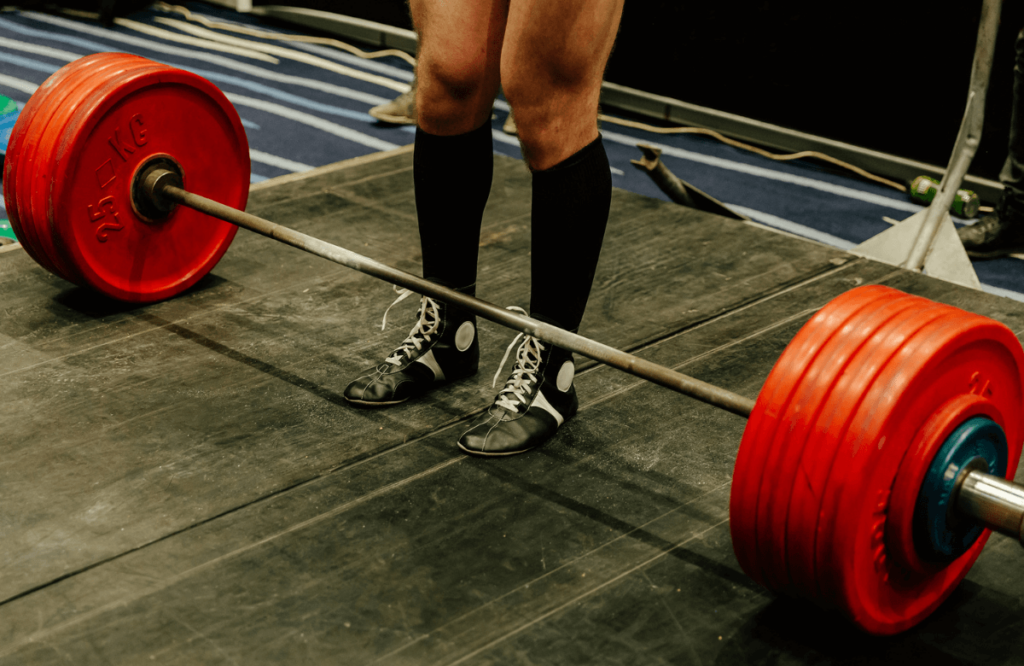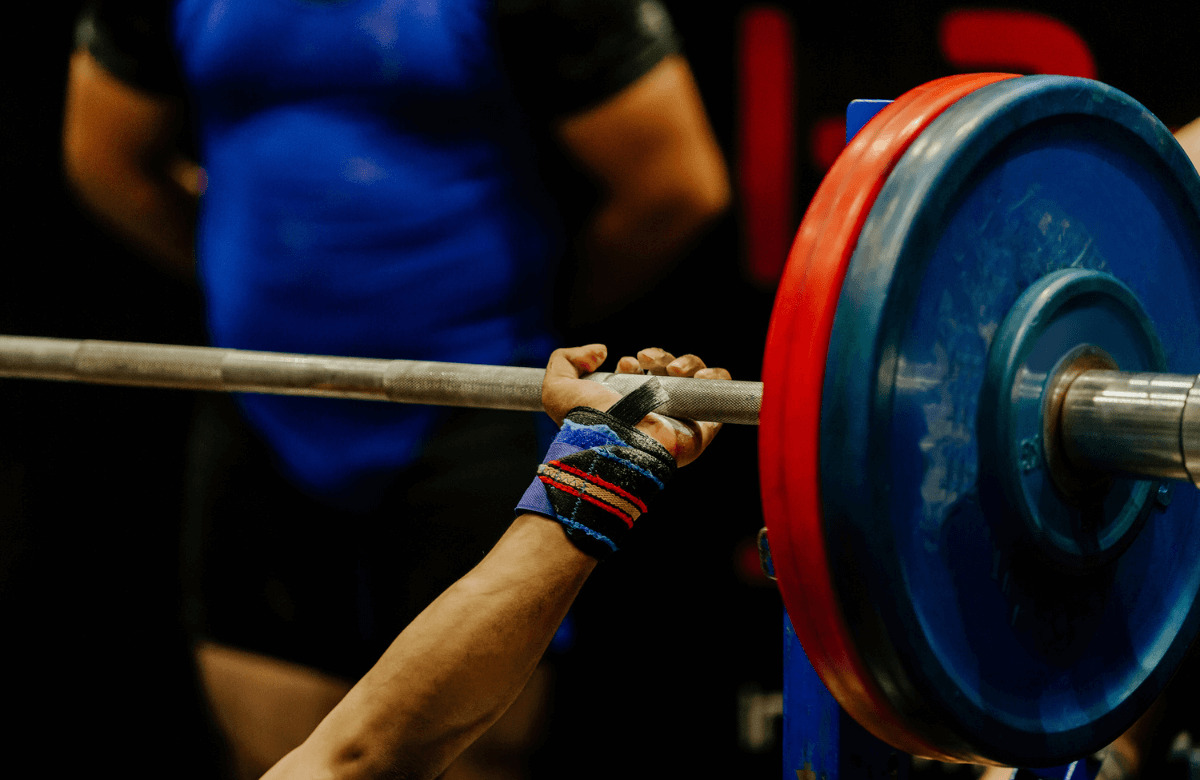There are many types of barbells that if you’re not an extreme powerlifter or are just getting into strength training, you might not know about them. There are all kinds of things from fixed-weight barbells to the standard power bar that can be used on power racks or with no extra machinery at all. But have you ever wonder how much does a deadlift bar weight?
If you’re interested in amping up your barbell exercises but aren’t sure about the varieties of barbells that are available and could assist you in accomplishing your training goals, this article is going to be your best friend.
Jump to:
What Is A Deadlift Bar?
If you’ve been to a commercial gym you’ve likely seen a decent-quality deadlift bar. The typical American steel barbell is the standard, straight-across Olympic bar weight that powerlifters and extreme athletes as seen in competitions use. These power bars are made heavier by weighted plates so you can choose to put on or take off for a more specific lifting experience.
Deadlifting: What Is It And How Do I Do It?
Deadlifting is a weight training exercise that in itself is just reaching down and lifting a loaded barbell or bar off the ground to the level of the hips before placing it back on the ground.
The one you likely think about when you hear deadlifting is the conventional deadlift (also known as the standard deadlift, traditional deadlift, or regular deadlift).
For this specific exercise, you’re going to start with the barbell on the floor and your feet mid-line underneath it. Keep your feet and hips aligned and have a neutral spine.
As you go to lower yourself to the bar, avoid the movement of “bending over” and instead line your fingertips up with the bar and lower yourself straight down. When you grip your hands and arms should be just outside your thighs.
With tension in your hamstrings and glutes, straighten your arms, and squeeze your shoulder blades together. Once everything is tight and in the correct place, lift and push your hips out and forward just enough so they’re touching the bar. Don’t arch your back or lean too far in any direction, this will knock you off balance and cause unnecessary hip and back pain.
Like in most deadlift variations, you’re going to want to push into the floor with your feet and do less of a “pulling” motion to receive the true benefit of the deadlift.
Types Of Bars Used For Lifters And Their Weight:
Standard Barbell Weight
Standard straight barbells are normally 5 to 6 feet long and weigh between 15 to 25 lbs and do bend quite a bit when being lifted with heavy weights. These barbells have a load capacity of 100 to 200 lbs. These are great workout tools but aren’t seen that often in commercial gyms due to the fact that they could easily bend with too much weight.
Olympic Weightlifting Bar Weight
Your Olympic barbell is about 7 feet long and weighs 45 pounds. It can be used for most lifts, including squats, deadlifts, bent-over rows, overhead presses, and even biceps curls. It’s the most commonly used weight for deadlifting. they’re studier and heavier than a standard bar and are normally used in commercial gyms because of that. In addition, the amount of weight an Olympic barbell can hold is usually between a 600lbs and 1,500lbs load capacity.
Trap Bar Weight
Also known as “hex trap bars,” these bad boys not only vary in weight, but they also have a wide range of handles, shapes, widths, and so much more. They’re often shaped like a trapezoid or a hexagon, hence their name, and are huge with fitness clients and athletes.
Below I listed out a few trap bars and their weights to give you an idea of how wildly they can vary in weight:
- Cap Barbell Olympic Trap Bar – 28lbs
- Everyday Essentials Hex Trap Bar – 45lbs
- Bells of Steel Open Trap Bar/Hex Bar 3.0 – 47lbs
- Vulcan Pro High Hex Trap Bar – 75 lbs
Trap bars are great for home gyms and even though they’re unusual in shape are a great start for beginners since it’s more forgiving than the barbell.
Safety Squat (Yoke) Bars Weight
This exercise tool weighs between 45-70 lbs and can usually handle over 600 lbs. This is a specialty barbell that is great for keeping its lifter properly upright and is much easier on the wrists and hands due to its shape around the shoulders. This bar will also force you to use more of your hamstrings and glutes if you’re having trouble with the proper form. It’s also often covered in thick padding around the shoulder area to be more comfortable as well.

Cambered Bar Weight
A Cambered bar is called that because of the camber (or arch) in the shape of the bar. It’s specifically used for squatting and it’s ideal for those who want to squat but suffer from upper body issues or shoulder mobility problems. Although, compared to an Olympic barbell it is much harder to squat with. These weigh around 65 pounds and are typically around 88” long. This one is a great option if you want to challenge your posterior chain muscles.
Swiss Bar Weight
This type of barbell (the cage-like contraption), the Swiss bar, weighs from 35 to 55 lbs and is used for a variety of exercises such as curling, rowing, pressing, and tricep extensions, with the core benefit being that it reduces stress from the wrists and shoulders. This is a great weight option for people who have shoulder issues or need help with a more optimal grip during strength training.
Curl Bar (aka EZ-Bar) Weight
This weight was originally desired to be more comfortable for bicep curls by allowing you to pronate your wrists. They’re around 15 lbs and are one of the smallest weight-bar options on the market. These are typically found at a preacher curl bench or in a stand.
What Bar Should I Use?
The bar you pick really depends on your training regimen, if you’re wanting heavier lifts, and if strength training and fitness are your only goals. You also have to keep in mind any injuries and if you’re still in recovery because that will also influence what bar you use. It’s really just a good idea if you try each one you’re interested in to see what fits you and your body best. What might work for your friend might not work for you, so get lifting and see!














